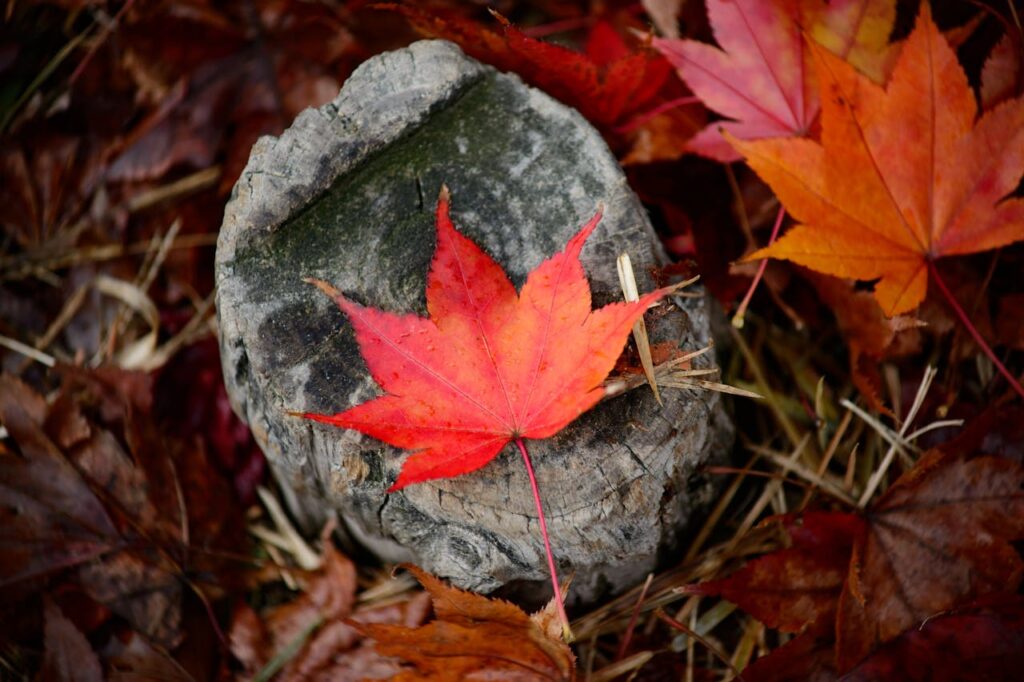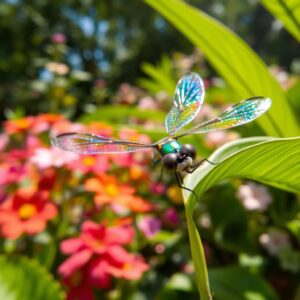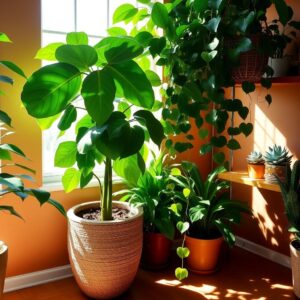
Explore & Play
Discover interesting topics and solve the accompanying crossword puzzle.
Deciduous Tree Crossword | Deciduous trees shaping seasonal landscapes and ecosystems
Table of Contents
Deciduous Tree Crossword
You can either fill in the crossword puzzle directly on this page or click the button in the bottom right corner to print it for free.

Deciduous Trees and Their Impact on Seasonal Landscapes
1. Introduction: The Beauty of Deciduous Trees in Changing Seasons
Deciduous trees, with their ever-changing beauty, offer a spectacular display of nature’s cycles, from vibrant spring leaves to the quiet dormancy of winter.
Overview of Deciduous Trees
Deciduous trees, unlike their evergreen cousins, shed their leaves in the fall and go dormant during winter. These trees, including maple, oak, and birch, adapt to seasonal changes by producing new leaves each spring and shedding them in autumn. Their life cycle provides a beautiful transition through the seasons, influencing everything from landscape aesthetics to environmental health. In contrast, evergreen trees retain their foliage year-round, offering a constant green presence. Deciduous trees, on the other hand, contribute to the ever-changing tapestry of nature.
Importance of Seasonal Changes in Landscapes
The role of deciduous trees in transforming landscapes through the seasons cannot be overstated. As they cycle through various stages—budding in spring, flourishing in summer, changing color in fall, and resting in winter—they create dynamic visual experiences. For instance, a walk through a forest in autumn, with its sea of red, yellow, and orange leaves, offers a completely different experience compared to the lush green summers. These trees are not only visually stunning but are essential in maintaining a balanced ecosystem, providing shelter and food for wildlife, as well as enhancing the air quality.
3. Spring Awakening: The First Signs of Life
As the days grow longer, deciduous trees begin to emerge from their winter slumber, bursting forth with new life and vibrant colors.
New Growth and Budding
In spring, deciduous trees like ash, willow, and poplar begin their remarkable transformation. Tiny buds appear on the branches, signaling the start of a new life cycle. The soft green leaves unfurl, providing the first hints of spring. This fresh growth is not just a visual delight; it also marks the beginning of a crucial process: photosynthesis. Trees such as the linden and magnolia also begin to blossom, attracting early pollinators like bees and butterflies, ensuring the growth of future generations.
The Role of Trees in Ecosystem Renewal
The budding and sprouting of new leaves have more significance than simply enhancing the landscape. Deciduous trees provide essential ecosystem services, such as improving soil fertility and offering habitats for early spring wildlife. Trees like the sweetgum start budding early, and their leaves are a sign of the soil’s revitalization. The appearance of these leaves also marks the renewal of the food chain, as herbivores begin feeding on the fresh growth, which in turn sustains predators.
4. Summer: A Flourish of Foliage and Shade
By summer, deciduous trees reach their full splendor, their lush canopies offering shade and cooling the environment around them.
The Growth and Canopy of Deciduous Trees
As the warm summer sun continues to shine, deciduous trees reach their full maturity. Trees like elm, chestnut, and sycamore boast a thick canopy that offers cooling shade to the surrounding area. Their large, wide leaves absorb the sun’s energy, converting it into the vital process of photosynthesis. These trees create microclimates beneath their leaves, helping to reduce temperatures and provide a cooling effect in urban areas, making them invaluable in city planning.
The Importance of Leaves for Photosynthesis and Ecosystem Support
During the summer months, the leaves of deciduous trees are working tirelessly to provide oxygen, mitigate carbon dioxide levels, and promote biodiversity. The leaves of red maples, beech, and other trees are especially efficient at photosynthesis. Not only do they provide a source of oxygen for the environment, but they also support a variety of organisms. The presence of these trees sustains insect populations, which, in turn, support larger animals like birds, squirrels, and other forest creatures.
5. Autumn: The Splendor of Fall Foliage
Autumn brings a spectacular display as deciduous trees change color, transforming landscapes into rich tapestries of reds, oranges, and yellows.
Color Change and Its Causes
One of the most striking features of deciduous trees is their fall foliage. As the weather cools and daylight hours shorten, trees like oak, birch, and black walnut undergo a transformation. The green chlorophyll breaks down, allowing other pigments like carotenoids and anthocyanins to show through, resulting in vibrant red, yellow, and orange hues. This beautiful display of color not only provides a visual feast but is also a natural process to help trees conserve energy for the coming winter.
The Role of Deciduous Trees in Seasonal Landscapes
The brilliant fall foliage of deciduous trees significantly enhances the beauty of the landscape. Trees like chestnut and tamarack stand out as they turn shades of yellow and gold, contributing to the rich autumn palette. These seasonal transformations help create a memorable experience for observers, especially in regions known for their stunning fall colors. The change also signals the preparation for winter, as trees begin to shed their leaves, which is a vital process for survival in colder months.
6. Winter: The Dormancy and Resilience of Deciduous Trees
As winter approaches, deciduous trees shed their leaves, entering a period of dormancy, yet their presence in the landscape remains vital.
Leaf Shedding and Adaptation
When winter arrives, deciduous trees like birch, larch, and alder shed their leaves in preparation for the colder months. This is an adaptation that allows the tree to conserve water and energy when the ground is frozen, and water is scarce. The leafless branches still stand tall, creating intricate silhouettes against the winter sky. This natural shedding also ensures that the tree does not expend unnecessary energy during the dormant season.
Structural Features: Bark, Twigs, and Branches
While the leaves of deciduous trees may be gone, other features like the bark, twigs, and branches continue to play an important role. The bark, particularly on trees like black walnut and sycamore, provides protection from cold temperatures and frost. Additionally, the twigs and branches support birds and small animals that use them for nesting or perching during the winter months. Even in the harshest conditions, deciduous trees maintain their essential functions.
7. The Role of Deciduous Trees in Ecosystem Health and Biodiversity
Beyond their beauty, deciduous trees are integral to maintaining the health of our ecosystems, providing habitat and supporting a diverse array of wildlife.
Providing Habitat for Wildlife
Deciduous trees provide essential habitats for a variety of wildlife species. Trees like willow and rowan offer shelter for birds, small mammals, and insects. Many animals rely on the cavities within the trunks or the leaves of these trees for shelter during colder months. For example, the sweetgum tree provides a habitat for squirrels, while red maples offer protection to many bird species. These trees act as vital shelters, helping ensure biodiversity within ecosystems.
Supporting Pollinators and Soil Health
The flowers of deciduous trees like alder and linden play a key role in supporting pollinators such as bees and butterflies. These insects are essential for pollinating other plants, ensuring the continuation of the plant life cycle. Furthermore, the fallen leaves of deciduous trees enrich the soil, providing organic matter that helps maintain soil health. This process is vital for the growth of future generations of plants.
8. The Practical and Cultural Value of Deciduous Trees
Deciduous trees offer more than just aesthetic value – they have long been celebrated for their practical uses and cultural significance.
Economic Uses of Deciduous Trees
Deciduous trees are valuable resources, especially for industries that rely on wood. Trees like hickory, oak, and maple are prized for their strong, durable wood, which is used in everything from furniture to flooring. The nuts of trees such as chestnut and black walnut are also harvested for culinary purposes, providing economic benefits to many communities. Additionally, these trees are used in the production of paper and other materials.
Cultural Significance
Beyond their practical uses, deciduous trees have long been a part of cultural traditions. For example, the cherry tree, known for its delicate blossoms, has been celebrated in various cultures, particularly in Japan, where cherry blossoms are seen as a symbol of renewal and the fleeting nature of life. Magnolias, with their large, fragrant flowers, hold cultural significance in many parts of the world, representing beauty and perseverance.
9. Deciduous Trees in Urban and Suburban Landscapes
As urbanization spreads, deciduous trees continue to play an essential role in improving city landscapes and enhancing the quality of life for residents.
Urban Planning and Tree Canopies
In urban planning, deciduous trees such as ash, linden, and elm are often planted along streets and in parks to provide shade, reduce air pollution, and improve the overall aesthetic of the area. These trees contribute significantly to the quality of life in cities, offering a green respite from concrete and asphalt. Their canopies not only enhance the environment visually but also contribute to reducing the urban heat island effect.
Challenges and Maintenance of Urban Trees
Despite their benefits, urban trees face challenges such as limited space, pollution, and extreme weather. Urban planners must carefully select hardy species like poplar or black walnut to ensure the survival of trees in harsh city environments. Regular maintenance, such as pruning and ensuring proper irrigation, is essential to the health of these trees, particularly in areas with high levels of pollution or extreme temperatures.
10. Protecting and Conserving Deciduous Trees for Future Generations
To ensure future generations can enjoy the beauty and benefits of deciduous trees, it’s vital that we actively protect and conserve these natural treasures.
Conservation Efforts for Threatened Trees
Many species of deciduous trees, including the tamarack and sweetgum, face threats from climate change, disease, and deforestation. Conservation programs aim to protect these trees and ensure they continue to thrive. This includes creating protected areas, reforesting damaged habitats, and supporting sustainable logging practices. The goal is to preserve biodiversity and maintain the ecosystem services these trees provide.
Sustainable Practices for Tree Planting and Care
Sustainability is key to ensuring the future of deciduous trees. Best practices for tree planting include choosing species suited to the local climate and ensuring proper care through pruning, watering, and pest management. Sustainable forestry practices, such as selective logging, also help ensure that deciduous trees can be harvested without compromising the health of the ecosystem.
11. Conclusion: The Enduring Legacy of Deciduous Trees
From the earliest buds of spring to the last drop of fall color, deciduous trees leave an enduring impact on our landscapes, shaping our environment for years to come.
Final Thoughts on the Value of Deciduous Trees
Deciduous trees are much more than just components of our landscape; they are integral to our planet’s ecological balance and biodiversity. From providing vital habitat to maintaining soil health, these trees enrich the environment in countless ways. Their seasonal beauty also offers us a deeper appreciation for the changing cycles of nature, reminding us of the resilience and adaptability of life.
Ready to Test Your Knowledge?
Why not take a fun break and test your newfound knowledge about deciduous trees? Play the crossword puzzle and see how many tree-related terms you can find!
Share to...
I hope you enjoy the content.
Want to receive our daily crossword puzzle or article? Subscribe!
You may also be interested in
Share to…
Want to receive our daily crossword puzzle?
-
Jigsaw Puzzles
Whimsical Garden Cat Jigsaw Puzzle 250 | 300 | 500 Pieces
kr 348,00 – kr 439,00Price range: kr 348,00 through kr 439,00 Select options This product has multiple variants. The options may be chosen on the product page -
Jigsaw Puzzles
Fjord Elegance: Abstract Jigsaw Puzzle 250 | 300 | 500 Pieces
kr 348,00 – kr 439,00Price range: kr 348,00 through kr 439,00 Select options This product has multiple variants. The options may be chosen on the product page -
Jigsaw Puzzles
Lofoten Serenity: Abstract Puzzle 250 | 300 | 500 Pieces
kr 348,00 – kr 439,00Price range: kr 348,00 through kr 439,00 Select options This product has multiple variants. The options may be chosen on the product page

















